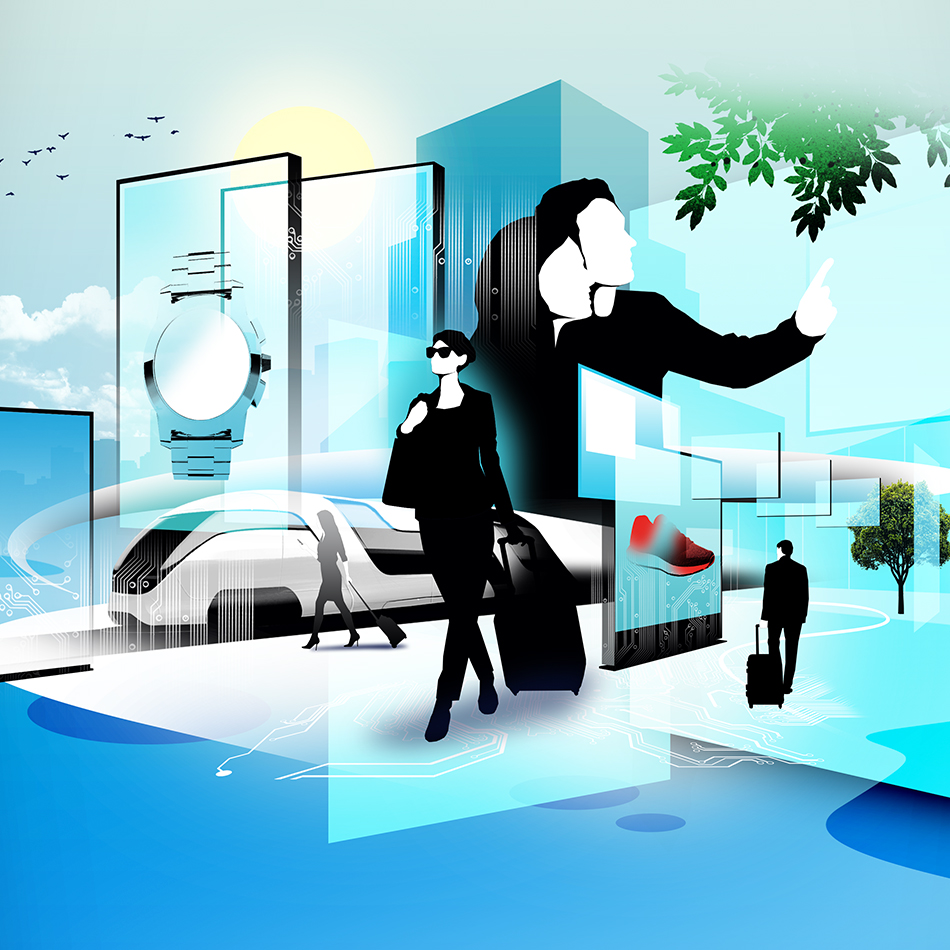
The market for AV products is becoming more complex as technologies are introduced and refreshed. This complexity is driven by the user’s expectations of universal connectivity. This means connectivity hardware must be selected in an informed and precise way from a versatile and flexible product portfolio. To share, extend, connect and convert signals is crucial in creating complex AV systems. The digitalisation of the world is reflected in these modern, versatile and powerful AV solutions and in turn, these solutions form the connected world.
In the 21st century digital signage applications have become commonplace in the advanced digital cities many of us call home. Digital signage is used to quickly, securely and attractively visualise content to an audience. Both information and presentation solutions fall into the larger category of digital signage. Advanced digital signage solutions allow companies to target audiences on-site in retail environments, place advertising and branding messages in prominent places for maximum visual impact, or even get vital information out to the public in the case of an emergency. Information solutions include everything from path finding systems in public areas that dynamically display information with changing circumstances such as gate closures in airports, through to simple displays that help customers find shops in large malls or shopping centres.
The question that faces installers, then is how to balance the act of presenting information clearly, but with enough creativity to make that content stand out?
Digital signage can be vital in capturing the public’s imagination with enormous video walls and displays on the side of buildings, within buildings and public facilities and in almost every other area of our daily lives. We have become ever more reliant on the convenience and clarity that technology brings to our lives. From the everyday advantages of screens in our cars, on our phones, and in our homes, to the large amount of information that can be quickly distributed in airports, hospitals, museums and other public areas, information displayed on our screens is treated as an authority. People accept the information on digital signage applications at an airport that lead then to a flight and emergency information that is displayed in buildings and public forums. The convenience afforded by digital signage to provide us this information easily, clearly and no matter where we are means that the information is immediately considered important and accurate. This link between authority and information even applies to the retail sector, where purchasing decisions are usually made on-site and influenced by attractive visual advertising, the perfect content for presentation and information solutions.
Ten years ago, digital signage was a silo solution – today they are integrated and connected to more devices than ever before in behind the scenes offices and control rooms. Even relatively simple applications feature full and easy to use controls for maximum versatility. Systems integrators and consumers are quickly becoming used to the ability to control and change content on-the-fly alongside a suite of analytic and connectivity features.
Presentation and information applications now have higher resolution and bandwidth requirements than ever before, versatile switching and signal monitoring are also becoming necessary features of digital signage installations. These state-of-the-art features are able to take simple digital signage applications to the next level and ensure that your business can stand out with unique and creative messaging.
RELATED SCENARIOS


